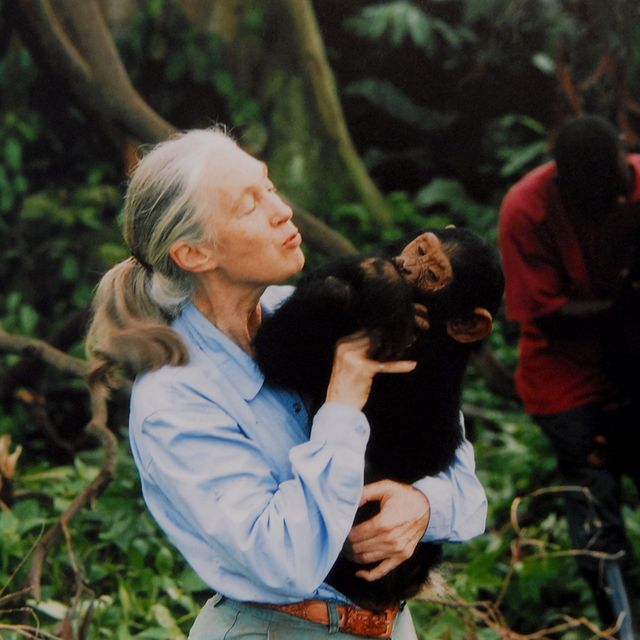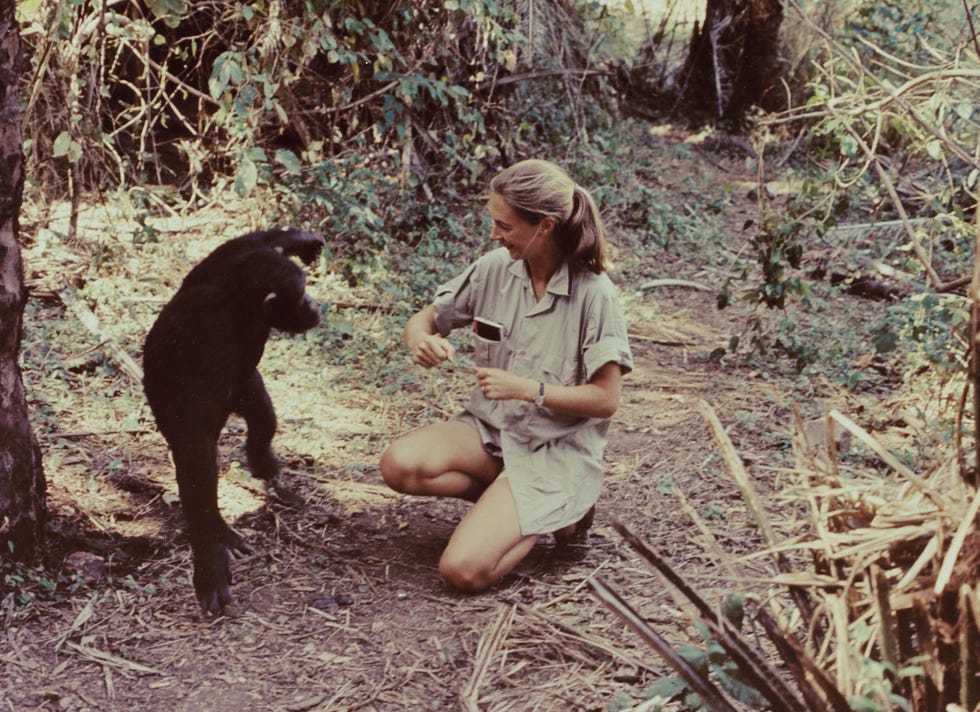When Jane Goodall first arrived at Gombe Stream Game Reserve in what’s now Tanzania in 1960, little was known about the world of chimpanzees. But the 26-year-old secretary would go on to make groundbreaking discoveries through her immersive, unorthodox observations, even as her findings were scoffed at by scientists early on.
In fact, Goodall’s approach – and lack of formal academic training – were key to her method of recording personality traits and naming her subjects, rather than numbering them as tradition dictated at the time.
Goodall couldn't afford college so she attended secretarial training
Born in London, Goodall had long been fascinated by both Africa and animals, says Anita Silvey, author of Untamed: The Wild Life of Jane Goodall. Tarzan books, which, of course. featured a character named Jane, and Dr. Dolittle books were favorites.
"When I was 10, I dreamed of going to Africa, living with animals and writing books about them," Goodall told CNN in 2017. "Everybody laughed at me because I was just a girl, we didn't have any money [and] World War Two was raging."
Unable to afford college and encouraged by her mother to learn typing and bookkeeping, Goodall sought steady employment by attending secretarial school.
“She needed to support herself and she and her family felt that with secretarial training, she'd always be able to get a job,” Silvey says.
Leaky was drawn to Goodall's observational skills
But Goodall found office work a bore, and when a friend invited her on an extended trip to her family’s farm near Nairobi, Kenya, she spent time waitressing to earn money for the voyage. At 23, she arrived and soon after was offered a job working with famed paleoanthropologist Louis Leakey at a natural history museum. Leakey, according to National Geographic, believed Goodall’s lack of formal scientific training, along with her passion for animals, would make her the right choice to study the social lives of chimpanzees at Gombe and Jane was enthralled by the idea.
“He wanted someone observant and not blinded by scientific theory,” Shivey says. “When he took Jane around in a Jeep, he found she could see and name all the animals in the area.”
Another test: Leakey gave Goodall a deck of cards and asked her which were black and which were red by viewing only the backs of the cards. “She couldn't tell him, but did show him all the bent corners,” Shivey says. “He had run this test a lot of times, often with men, who didn't see the bent corners. In general, Leakey thought women to be more observant than men and chose three women (Goodall, Birutė Galdikas and Dian Fossey) to research chimps, orangutans and gorillas.”
In her 2010 book, Jane Goodall: 50 Years at Gombe, Goodall notes that because she didn't attend college, Leakey had trouble finding funding for the research.
“Eventually, though, he got a six-month grant from Leighton Wilkie, a Des Plaines, Illinois, businessman with an interest in human evolution,” she writes. “The British authorities had refused to let a young girl go into the forest alone — so my mother, Vanne, volunteered to accompany me.”
In 1960, Goodall began her observations, giving the chimps names, such as Goblin, Freud and Frodo.
“She took an unorthodox approach, immersing herself in their habitat, experiencing their complex society as a neighbor rather than a distant observer, and defying scientific convention by giving them names instead of numbers,” according to the Jane Goodall Institute. “She came to understand them not only as a species, but as individuals with personalities, complex minds, emotions and long-term bonds. Her findings on the tool-making practices of chimpanzees remain one of the most important discoveries in the world of primatology.”
Despite not having an undergraduate degree, Goodall eventually earned her Ph.D.
With Leakey’s influence, according to Shivey, Goodall entered a doctoral program at Cambridge University in 1962 without an undergraduate degree — one of just a handful to do so, though she was not exactly enthusiastic about it.
“I was only doing this thesis for Leakey’s sake,” Goodall told the BBC. “I’d never had an ambition to be a scientist and be part of academia.”
According to the BBC, she was patronized by her mostly male classmates for giving the chimpanzees names and personalities. “I didn’t give them personalities, I merely described their personalities,” she told the news source. “Some scientists actually said I must have taught them (to use tools). That would have been fabulous if I could have done that.”
And, as she said during the 2019 One Young World summit London, her research methods were often dismissed at Cambridge.
“You can’t share your life in a meaningful way with a dog, a cat, a rabbit and so on, and not know the professors were wrong,” she said, according to CNBC. “And now animal intelligence, in particular, is something that people are really interested in.”
Goodall earned a Ph.D. in ethology, the science of animal behavior in 1966, and continued her research at Gombe for 20 more years.
“She was at that point the foremost researcher in chimpanzees in the world,” Shivey says. “When her doctoral thesis was submitted to the committee (with no name given), one of the members said it had to be sent to Jane Goodall, because she knew more about chimpanzees than anyone.”













